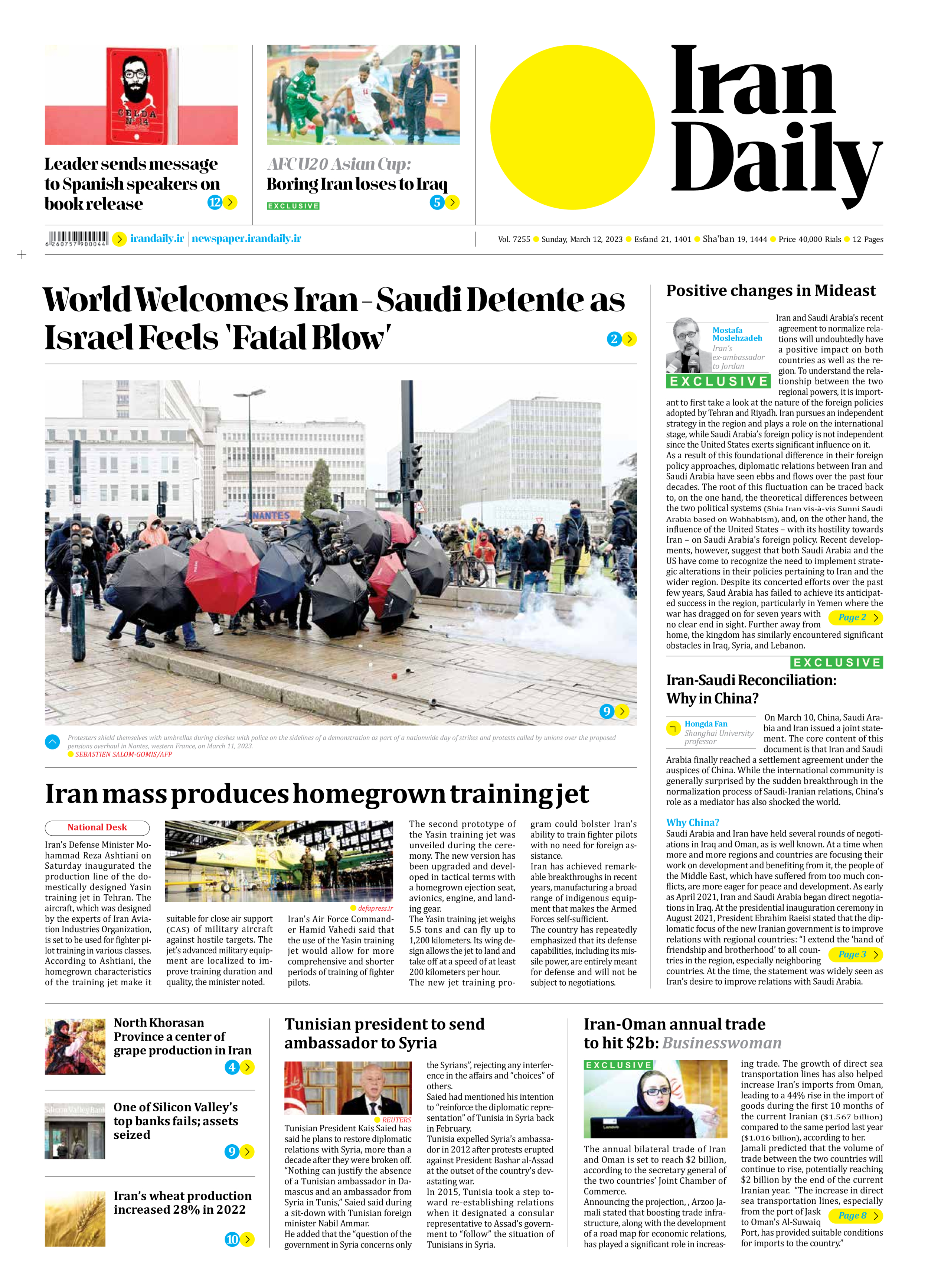
Iran mass produces homegrown training jet
Iran’s Defense Minister Mohammad Reza Ashtiani on Saturday inaugurated the production line of the domestically designed Yasin training jet in Tehran. The aircraft, which was designed by the experts of Iran Aviation Industries Organization, is set to be used for fighter pilot training in various classes.
According to Ashtiani, the homegrown characteristics of the training jet make it suitable for close air support (CAS) of military aircraft against hostile targets. The jet’s advanced military equipment are localized to improve training duration and quality, the minister noted.
Iran’s Air Force Commander Hamid Vahedi said that the use of the Yasin training jet would allow for more comprehensive and shorter periods of training of fighter pilots.
The second prototype of the Yasin training jet was unveiled during the ceremony. The new version has been upgraded and developed in tactical terms with a homegrown ejection seat, avionics, engine, and landing gear.
The Yasin training jet weighs 5.5 tons and can fly up to 1,200 kilometers. Its wing design allows the jet to land and take off at a speed of at least 200 kilometers per hour.
The new jet training program could bolster Iran’s ability to train fighter pilots with no need for foreign assistance.
Iran has achieved remarkable breakthroughs in recent years, manufacturing a broad range of indigenous equipment that makes the Armed Forces self-sufficient.
The country has repeatedly emphasized that its defense capabilities, including its missile power, are entirely meant for defense and will not be subject to negotiations.







